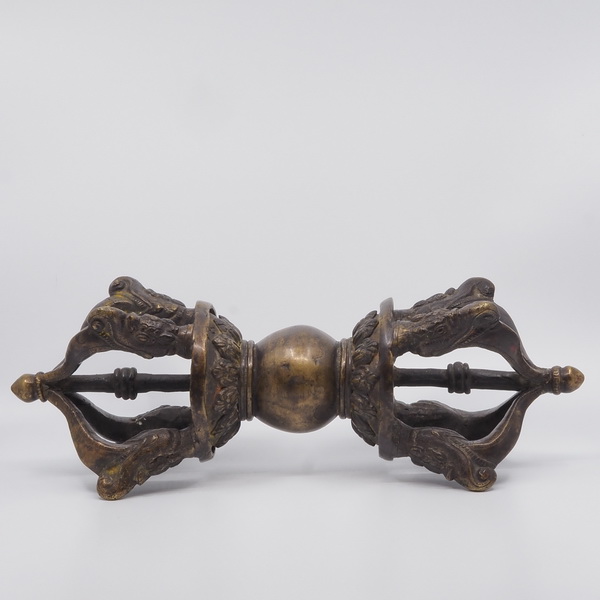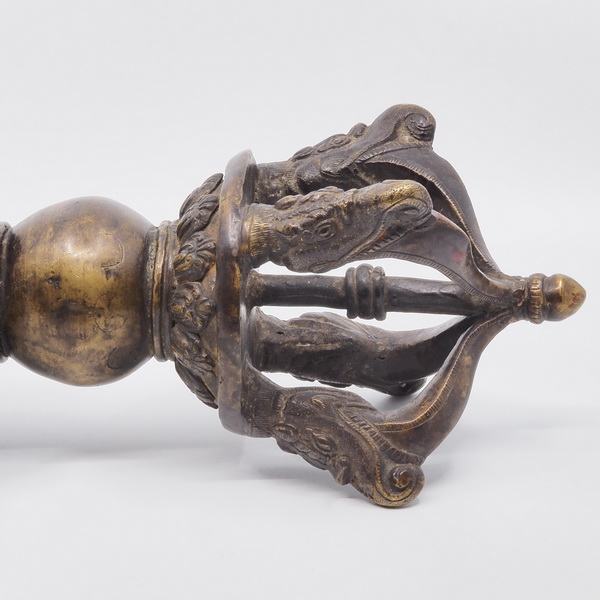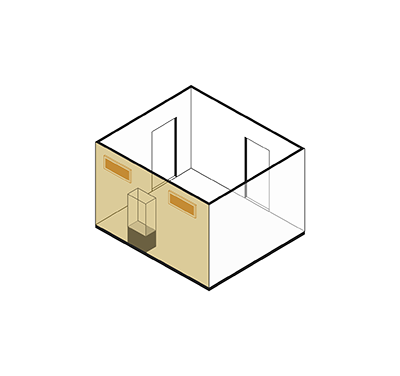ABR 072
Code: ABR 072
Country: Tibet
Style:
Date: 1900 - 2000
Dimensions in cm WxHxD: 14.3 x 41.5
Materials: Gilt and silvered iron
Five-pronged diamond sceptre (pancasucika-vajra)
The vajra is one of the most important symbols of Tibetan Buddhism. In addition to the two primordial meanings of “lightning” and “diamond”, the Sanskrit term also carries the idea of purifying heat and of the male sexual organ. The term vajra in its meaning as “diamond” designates the indestructible nature of spirit itself, as well as its Awakening, which is both eternal and indivisible like a diamond. Associated with the bell (ghanta), the vajra as an object symbolizes both compassion and skillful means of activating it, while the ghanta represents wisdom and vacuity.
The vajra is one of the most important symbols of Tibetan Buddhism. In addition to the two primordial meanings of “lightning” and “diamond”, the Sanskrit term also carries the idea of purifying heat and of the male sexual organ. The term vajra in its meaning as “diamond” designates the indestructible nature of spirit itself, as well as its Awakening, which is both eternal and indivisible like a diamond. Associated with the bell (ghanta), the vajra as an object symbolizes both compassion and skillful means of activating it, while the ghanta represents wisdom and vacuity.



